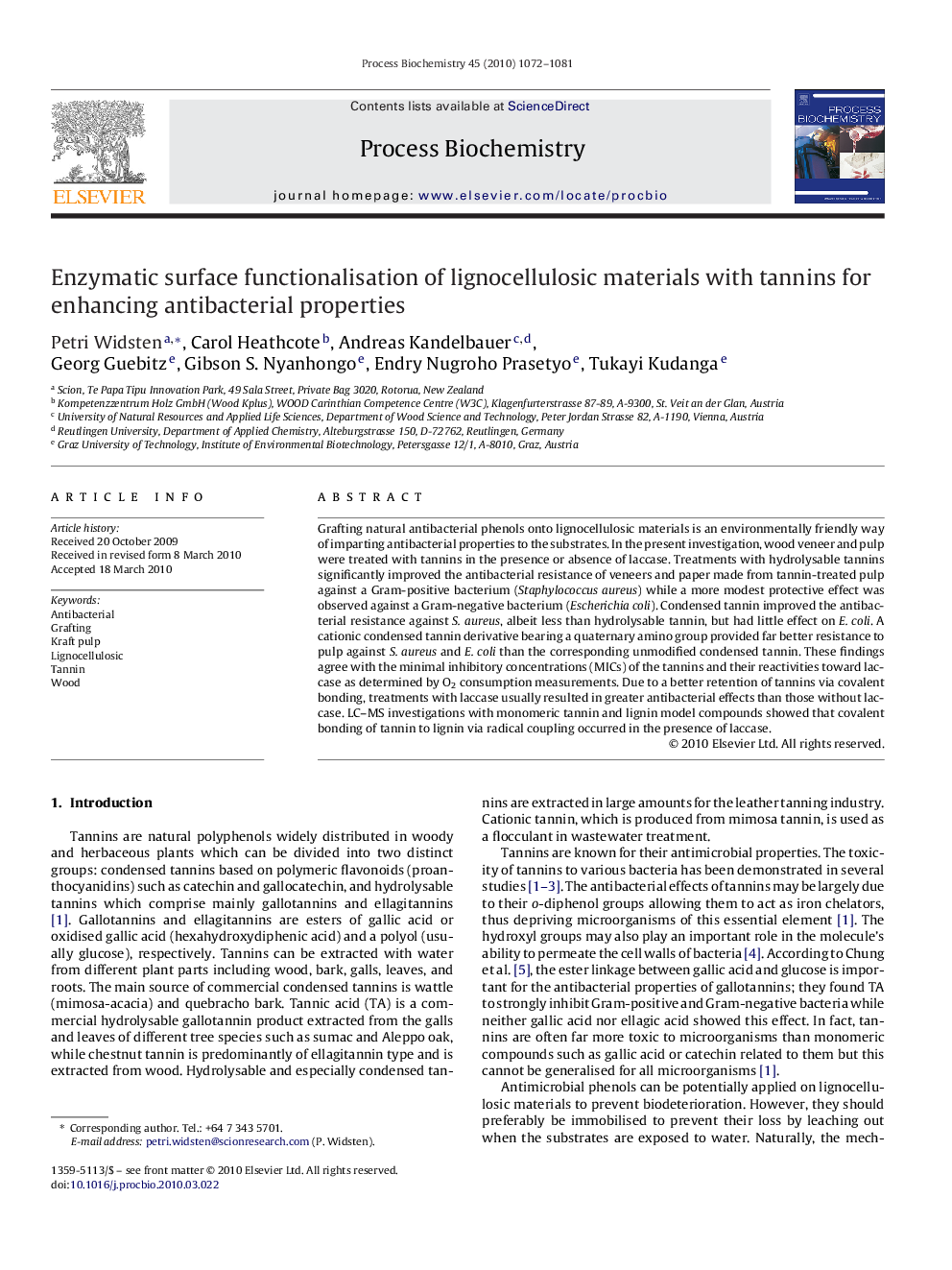| Article ID | Journal | Published Year | Pages | File Type |
|---|---|---|---|---|
| 35180 | Process Biochemistry | 2010 | 10 Pages |
Grafting natural antibacterial phenols onto lignocellulosic materials is an environmentally friendly way of imparting antibacterial properties to the substrates. In the present investigation, wood veneer and pulp were treated with tannins in the presence or absence of laccase. Treatments with hydrolysable tannins significantly improved the antibacterial resistance of veneers and paper made from tannin-treated pulp against a Gram-positive bacterium (Staphylococcus aureus) while a more modest protective effect was observed against a Gram-negative bacterium (Escherichia coli). Condensed tannin improved the antibacterial resistance against S. aureus, albeit less than hydrolysable tannin, but had little effect on E. coli. A cationic condensed tannin derivative bearing a quaternary amino group provided far better resistance to pulp against S. aureus and E. coli than the corresponding unmodified condensed tannin. These findings agree with the minimal inhibitory concentrations (MICs) of the tannins and their reactivities toward laccase as determined by O2 consumption measurements. Due to a better retention of tannins via covalent bonding, treatments with laccase usually resulted in greater antibacterial effects than those without laccase. LC–MS investigations with monomeric tannin and lignin model compounds showed that covalent bonding of tannin to lignin via radical coupling occurred in the presence of laccase.
